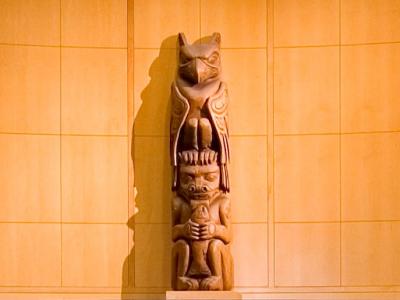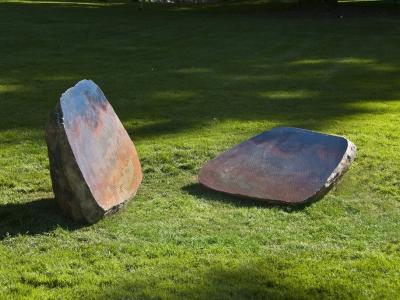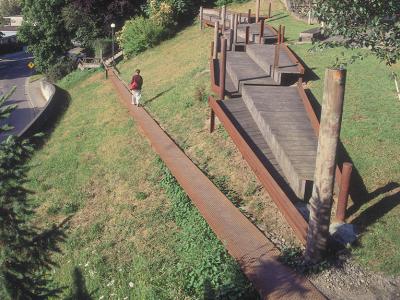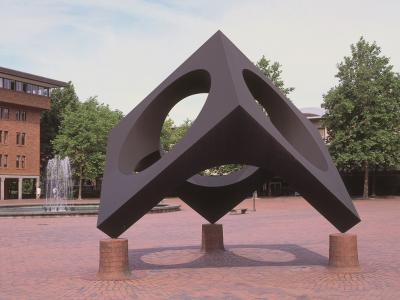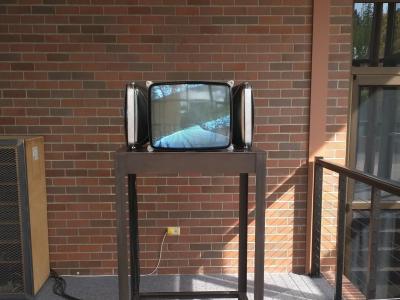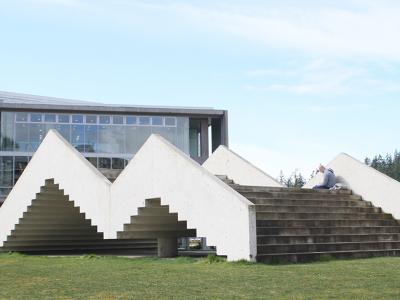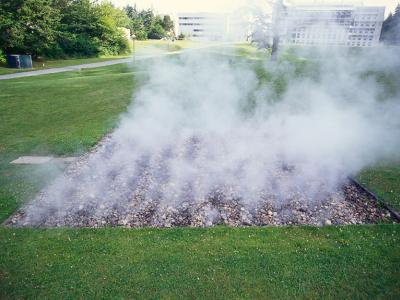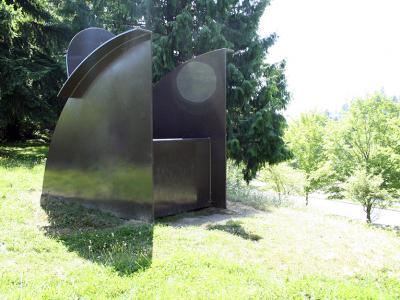James FitzGerald, Rain Forest, 1959
James FitzGerald, 1959, installed 1960.
Bronze fountain. 14' h. x 12' w. x 24' l.
Photo credit: Jesse Sturgis
Art allowance from Haggard Hall constructions funds. 2004 Student Art Allocation for Wade King Student Recreation Center and the Ted E. Gary Family.
Description
James FitzGerald's sculptural fountain symbolizes the great rain forest of the Olympic Peninsula. The commissioning architect Paul Thiry sited the fountain between the Romanesque Wilson Library and his international-style pavilion of Haggard Hall, which originally housed the general sciences program. Interpreting the process of nature at work, FitzGerald created a tall, vertical element weathered by wind and rain. Observant of geographical location, he also placed in the pool a horizontal element incorporating shapes reminiscent of Asian calligraphy and architectural details. As other artists had done, FitzGerald responded to the special nature and varied elements of forests and water in the Northwest. Characteristically, he singled out a tree dripping with water, one of the Pacific Northwest's most beautiful and defining sights.
Yet, underlying FitzGerald's observations and intuitive feeling for nature were the prevalent philosophical and intellectual concepts of the position of man and nature in the post-World War II era. In the late thirties, FitzGerald had studied philosophy at Yale where he no doubt had come across the writings of German philosopher Friedrich Nietzsche (d. 1900). Popular among American artists and writers in the thirties, Nietzsche conceived a new type of being who, through study of his ancestors and nature's powers, could undermine the strict dependence on science of modern civilization.
Full text
Artists studied both Native American and Asian cultures to see how earlier civilizations had related to their dramatic natural surroundings; how early man communicated with and appeased natural spirits; and how he fit in with all living things.
For example, early in his designs for the Mercer Island Bridge Tunnel (1938-40), he had referred to Seattle's role as a link between the United States and Asia by carving in relief a whale flanked by a Northwest Indian motif with an eagle and an Oriental motif with a dragon. His paintings from the mid-forties to the early sixties with such titles as Resurgent Sea (1945, Collection Seattle Art Museum) and Witness Tree (1962) evoke turbulence and a search for levels of human consciousness.'" In his sculptures, as Rain Forest (1959), these metaphors are captured through the ragged crusted surfaces. During the early nineties Rain Forest was taken down due to the remodeling of Haggard Hall as a wing of the library. When the sculptural fountain is reinstalled at the new Student Recreation Center (see below), it will be a quieter metaphor of replenishment.
© Sarah Clark-Langager


